How to Sell on Temu? A Complete Guide for New and Multichannel Sellers [2025]
Learn how to sell on Temu the right way
Learn how to sell on Temu the right way
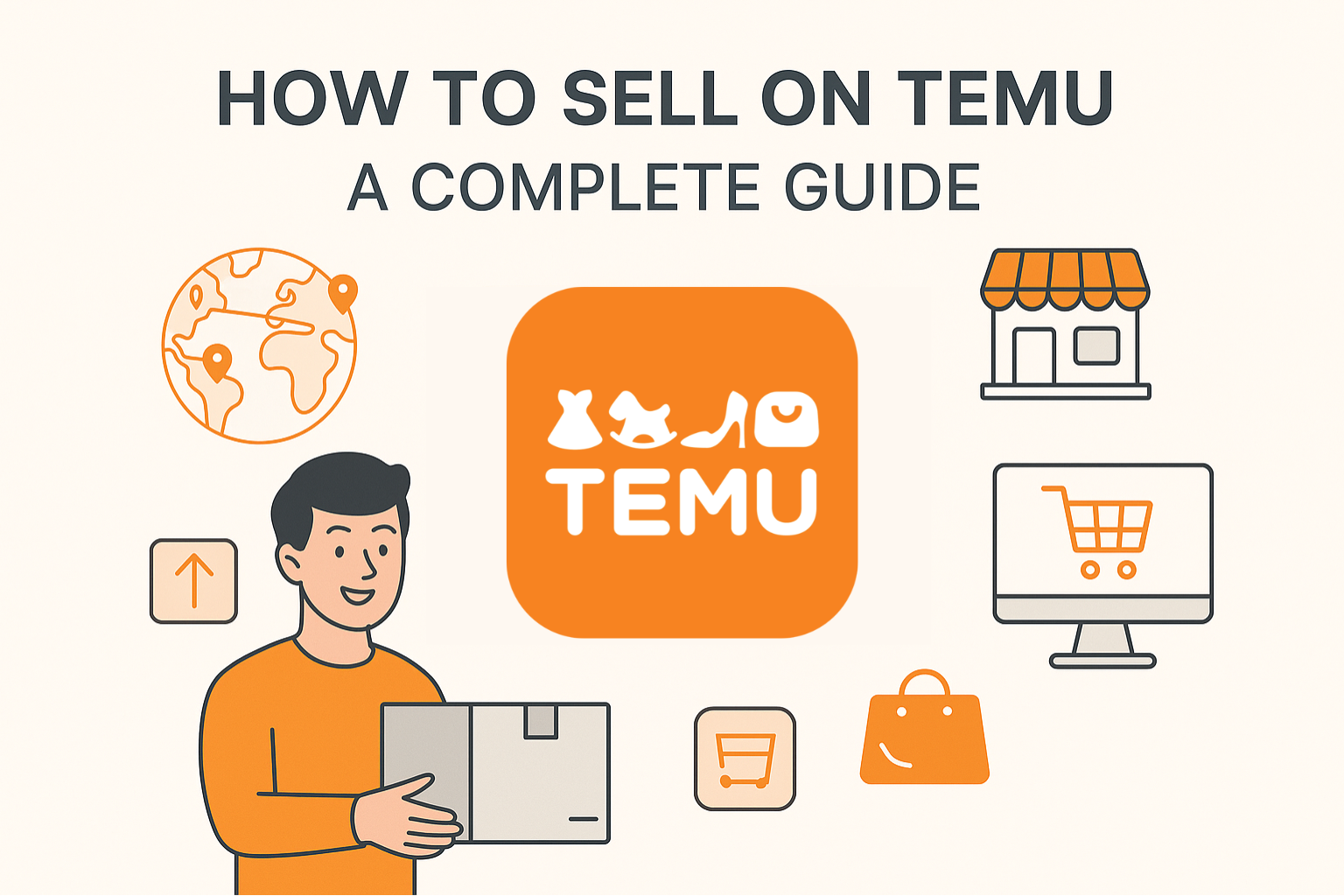
Temu is quickly becoming one of the most popular online marketplaces, offering sellers access to millions of buyers across the globe. If you’re wondering how to sell on Temu, you’re not alone. Whether you’re a new seller or already running stores on Shopee, Lazada, Amazon, or Shopify, Temu presents a valuable opportunity to expand your reach.
In this guide, you’ll learn exactly how to become a Temu seller, what to expect from the platform, and how to simplify the process, especially if you’re managing multiple sales channels.
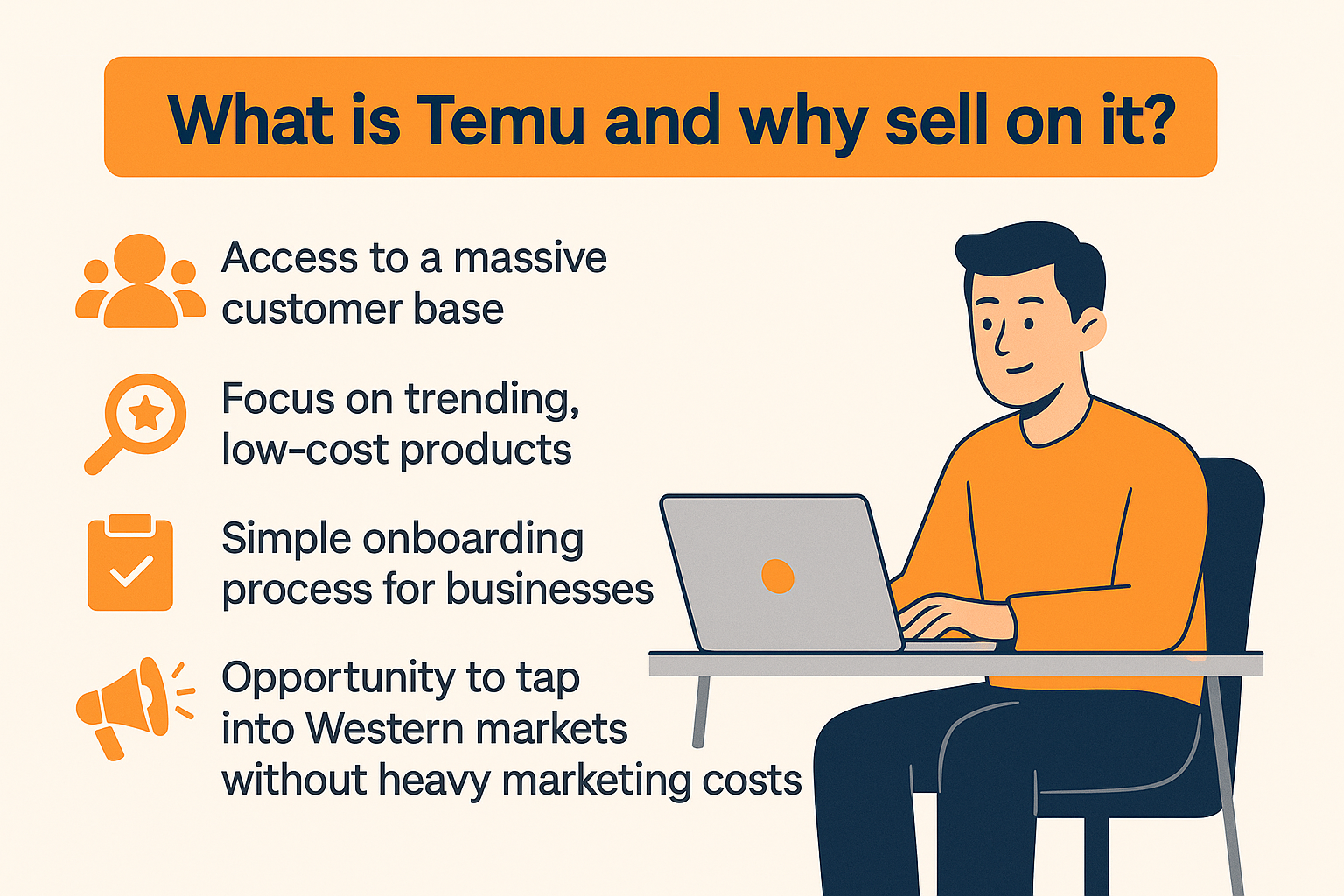
Temu is a fast-growing eCommerce platform known for offering affordable products across categories like fashion, electronics, home goods, and more. Backed by PDD Holdings, Temu has gained significant traction in markets like the US and Europe.
Access to a massive customer base. Temu’s rapid expansion across the US and Europe gives sellers exposure to millions of active buyers. Instead of relying solely on local or regional markets, businesses can tap into a global audience without needing to build their own traffic. This broad reach increases the chances of higher sales volumes, especially for competitive product categories.
Focus on trending, low-cost products. Temu has built its reputation around offering affordable, in-demand items that appeal to price-conscious shoppers. For sellers, this means a ready-made marketplace where customers are actively searching for budget-friendly deals. Businesses that can source or manufacture cost-effective products are well-positioned to thrive in Temu’s value-driven ecosystem.
Simple onboarding process for businesses. Unlike some marketplaces that require complex approvals or high upfront fees, Temu offers a streamlined registration process for qualified sellers. Once basic business documentation is submitted, sellers can quickly set up their store and start listing products. This ease of entry allows businesses to get started with minimal friction and begin generating sales faster.
Opportunity to tap into Western markets without heavy marketing costs. Entering markets like the US and Europe typically demands significant investment in advertising and customer acquisition. Temu removes that barrier by providing a built-in platform where traffic is already established. Sellers can focus on offering competitive products while Temu handles much of the customer reach, saving businesses from the high costs of running independent marketing campaigns.
Yes, but Temu operates differently from marketplaces like Shopee or Amazon. You can’t just sign up as an individual seller. Temu works mainly with manufacturers, wholesalers, and businesses that can offer competitive pricing and handle bulk operations.
Manufacturers
Distributors or wholesalers
Businesses with existing eCommerce operations
Sellers capable of meeting Temu’s pricing and logistics expectations
If you’re already selling on platforms like Shopee, Lazada, Amazon, or Shopify, you’re in a strong position to join Temu as you likely meet these criteria.
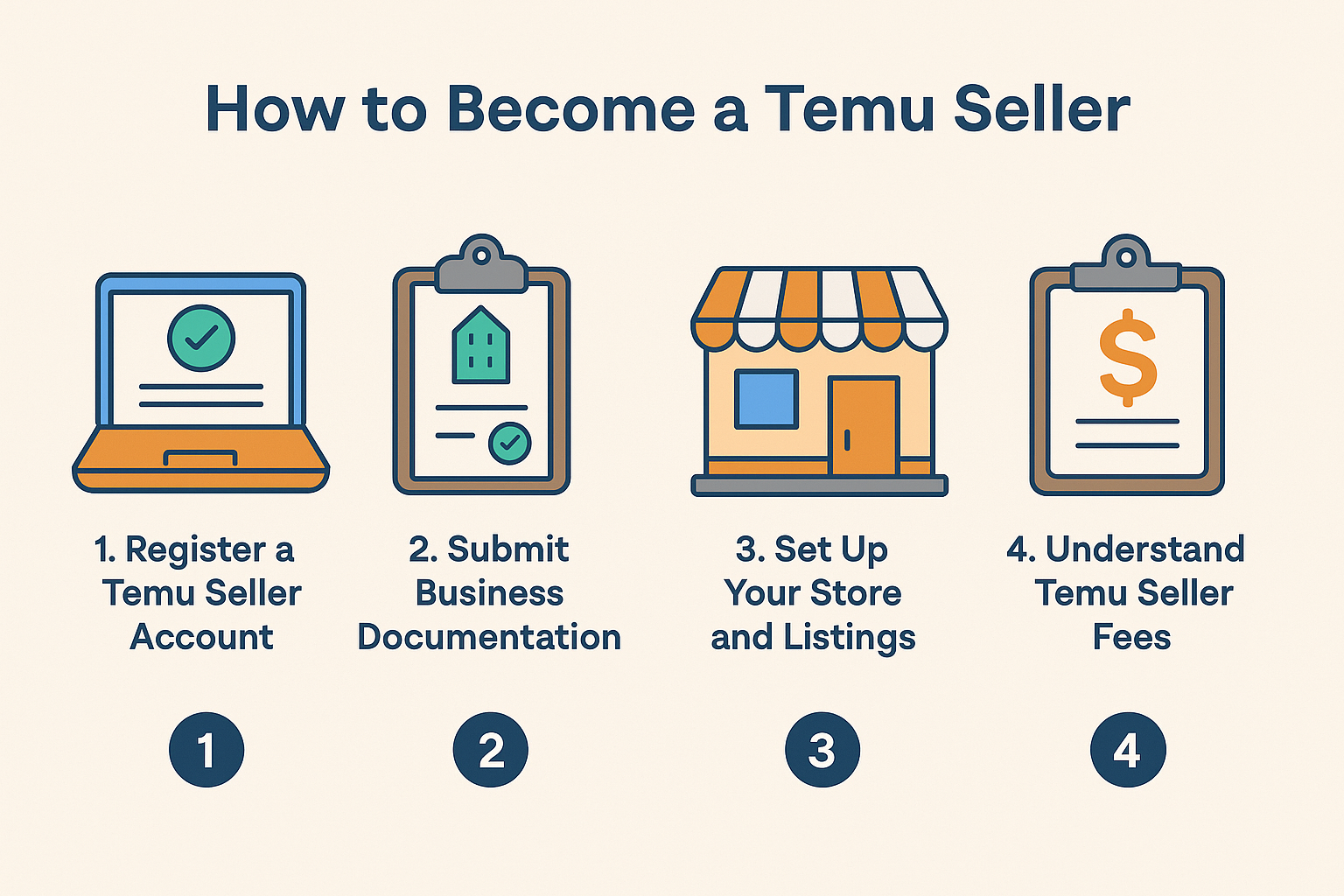
Head over to the Temu Seller Center to start your temu seller registration. You’ll need to create a Temu business account by submitting basic information.
Temu requires:
Business license
Tax identification details
Bank account for payments
Proof of manufacturing or sourcing capabilities
Approval times can vary, but having complete documents speeds up the process.
Once approved, you’ll get access to the Temu Seller Center dashboard where you can:
Upload product listings
Set prices (keeping in mind Temu’s focus on affordability)
Configure shipping and logistics details
Listings must comply with Temu’s guidelines regarding product descriptions, images, and categories.
Understanding the fee structure is crucial for any seller considering Temu as a sales channel. Here’s a detailed look at the costs involved:
Registration Fee: Temu does not charge any fees to register as a seller.
Listing Fee: There are no fees to list products on the platform.
Individual Sellers: No monthly subscription fee.
Business Sellers: A monthly subscription fee of $39 is applicable.
Temu charges a commission on each sale, which varies based on the product category.
Commission Range: Typically between 8% to 15% of the sale price.
All transactions are processed through PayPal.
Fee Structure: 2.9% of the transaction amount plus $0.30 per transaction.
While customers often enjoy free standard shipping, sellers are responsible for covering shipping expenses.
Cost Determinants: Based on the size and weight of the package.
Sellers utilizing Temu’s fulfillment services will incur additional fees.
Fee Basis: Determined by the dimensions and weight of the products.
Temu attracts price-sensitive buyers. Ensure your products are priced to compete.
Analyze trends within Temu’s marketplace to identify what’s selling well.
Temu emphasizes fast delivery. Use reliable logistics partners or Temu’s fulfillment options.
Clear images, concise titles, and accurate descriptions improve visibility and conversions.
Customer satisfaction plays a role in your store’s ranking within Temu.
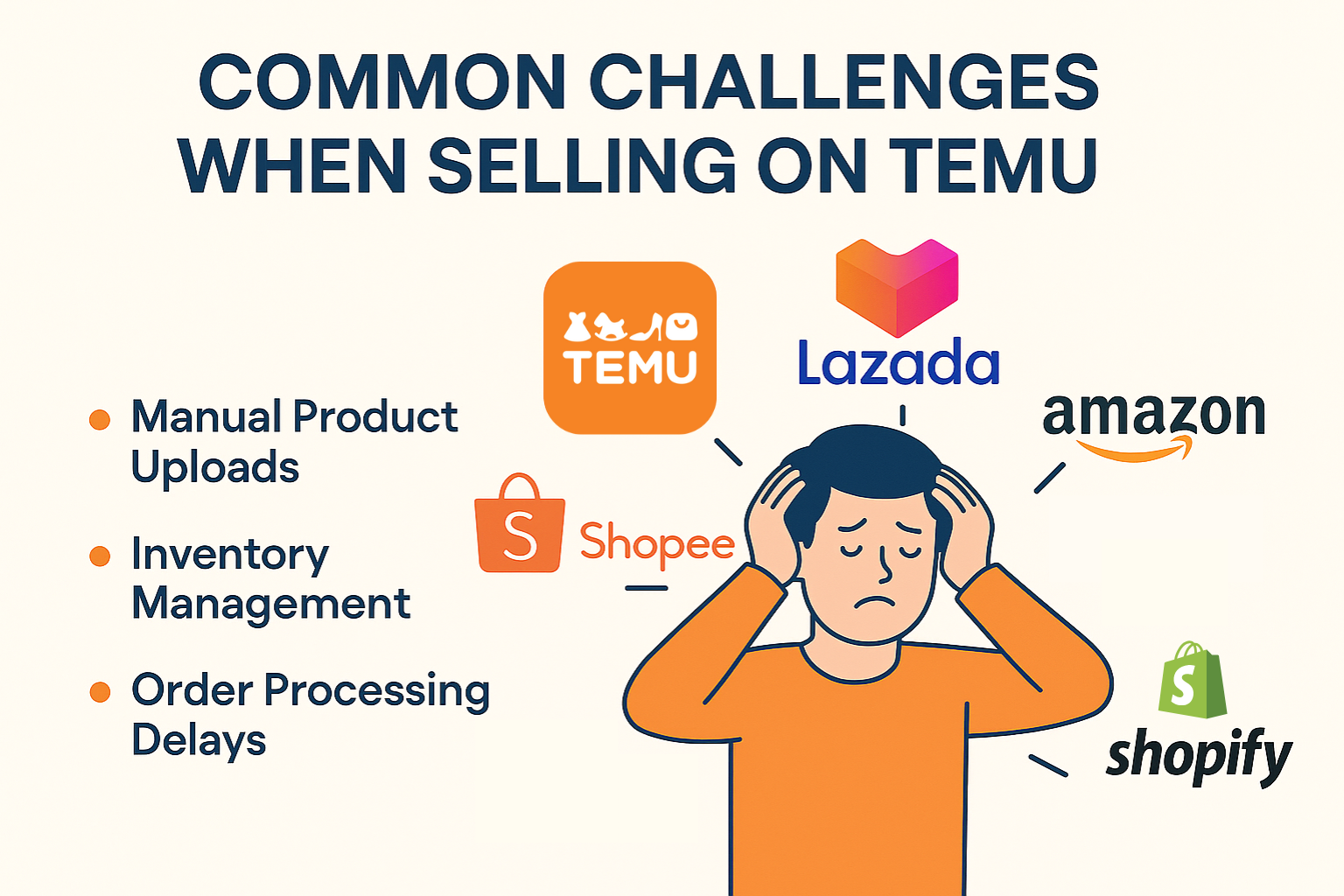
If you’re already selling on other platforms, re-uploading every SKU to Temu can be time-consuming.
Selling on multiple platforms increases the risk of overselling if stock levels aren’t synced in real-time.
Handling orders separately across Temu, Shopee, Lazada, Amazon, and Shopify can overwhelm your operations.
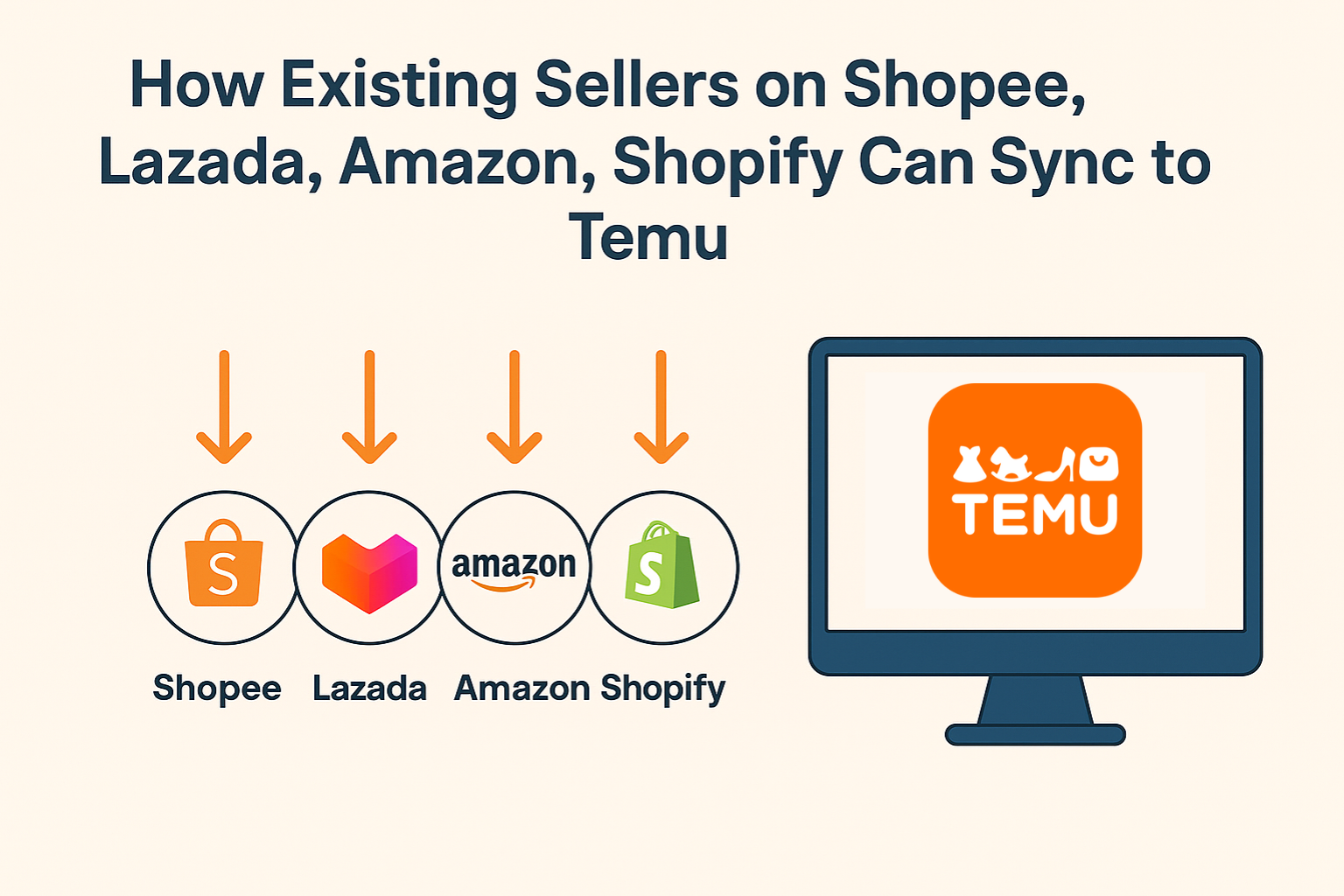
If you’re already active on marketplaces like Shopee, Lazada, TikTok Shop, Amazon, or Shopify, managing Temu as a separate channel adds unnecessary manual work.
This is where OneCart becomes essential.
Sync Product Listings
Copy listings from Shopee, Lazada, or Shopify directly to Temu without manual duplication.
Automatic Inventory Updates
Prevent overselling by keeping stock levels updated across all platforms in real-time.
Centralized Order Management
View and process orders from Temu and other marketplaces in a single dashboard.
Simplify Multichannel Growth
Focus on expanding your business, not managing platform logistics.
👉 Learn more about how to streamline your Temu operations here: OneCart Temu Integration
Visit the Temu Seller Center, fill out the registration form, and submit your business documents for approval.
Shopee generally has lower commission fees than Lazada, but sellers may need to spend more on promotions to remain competitive. Lazada’s fees are higher, but it offers better brand visibility and logistics support.
Temu charges a commission per sale. There are no subscription fees, but logistics costs may apply depending on your arrangement.
Shopee sellers typically have higher sales volume but lower profit margins due to price competition. Lazada sellers often sell fewer products but at higher order values, making it more profitable for premium items.
Not directly, but with OneCart, you can sync your Shopify listings and manage inventory across both platforms.
Use multichannel management software like OneCart to automate inventory updates and avoid stock issues.
Yes, Temu provides logistics solutions, but sellers can also manage their own shipping if preferred.
Selling on Temu is a great opportunity for businesses looking to tap into a growing global marketplace. The platform offers low barriers to entry but comes with operational challenges, especially for those already selling on Shopee, Lazada, Amazon, Shopify, or TikTok Shop.
To succeed, you need more than just low prices. Efficient management of listings, inventory, and orders across platforms is key. That’s where automation tools like OneCart help you stay ahead.
Want to sell smarter across multiple platforms? Try OneCart today to simplify your eCommerce operations!
Automate & Scale Your Online Business with OneCart
Start a Free TrialUsed by hundreds of merchants in Singapore & Southeast Asia